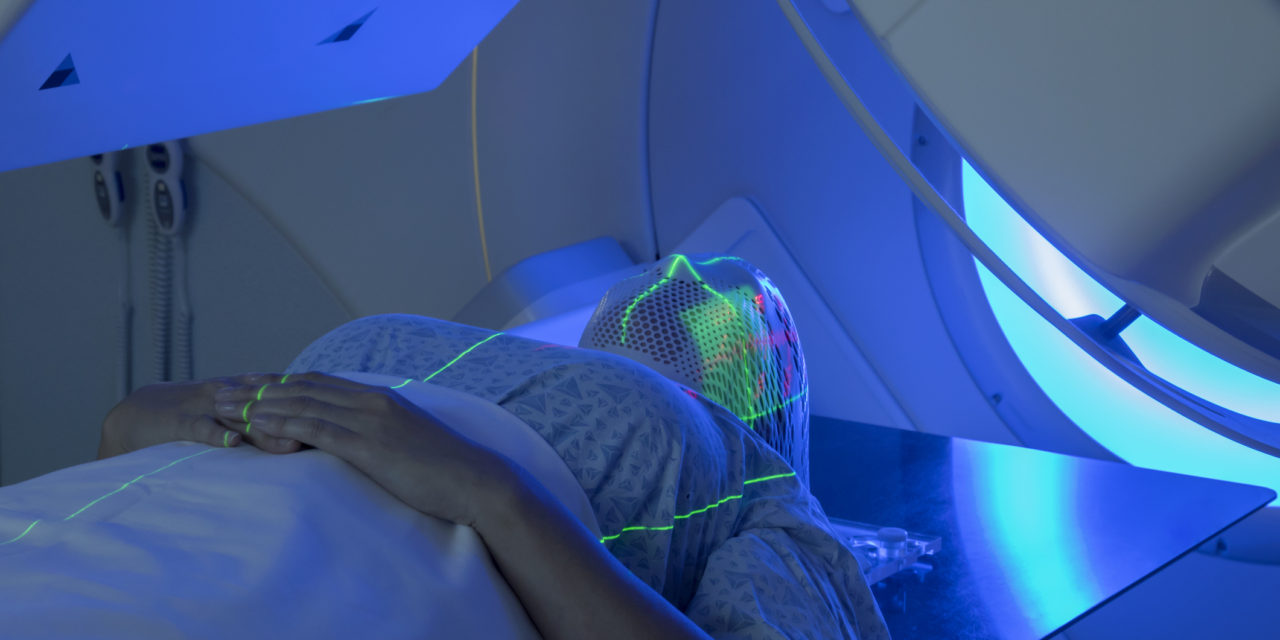We all wish a cancer diagnosis was met with a simple prescription for a cure-all pill instead of more-invasive treatments like chemotherapy, radiation, and surgery. Unfortunately, we’re not there yet. However, medical trials, clinical studies, and technological advances are moving us toward more precise treatments, designed to target only the tumor and its cells. Some of these procedures and technologies are accurate down to millimeters, allowing the nearby healthy tissue to remain undamaged. And many of these treatments are characterized by far fewer side effects and greater curative success.
We’ve also seen impressive advances recently in reconstruction, offering patients options that would have sounded like something out of a science-fiction novel not too long ago.
But medical treatments aren’t the only mark of improved care. Doctors and caregivers have a greater understanding of the type of support that’s needed to get patients and their families through the cancer ordeal. And since Capital Health is on the frontlines of cancer treatment—offering innovative options that aren’t available at any other medical facility in the region—the hospital can, in many cases, give patients the best chance to survive with the least amount of disruption to their bodies. In their own words, Capital Health oncologists, radiologists, and experts explain why these advancements are giving both doctors and patients hope in the fight against cancer.
Radiation Oncology: A Targeted Approach
When Shirnett Williamson, MD, started in oncology, patients dealt with difficult side effects from radiation used to treat large areas. As Capital Health’s Medical Director of Radiation Oncology Services, Dr. Williamson has been advancing a sea change in treatment. “We’re now able to treat smaller areas with higher doses. So we’re more curative, but with fewer side effects.” She says the hospital can care for almost any type of cancer with a range of innovative treatments. Here’s what she had to say about them:
Stereotactic External Beam Radiation
With this radiation-delivery system, we input treatment plans and scans of the tumor into a computer, then the patient lies on a table while a robotic arm delivers carefully targeted beams of radiation. The device at Capital Health is called the CyberKnife™ Robotic Radiosurgery System.
CyberKnife is elegant in that it can administer high doses of radiation to the tumor while avoiding damage to the healthy tissue nearby. This outpatient treatment takes less than an hour, requires no recovery time, and is relatively comfortable for the patient. Whereas other systems hold the patient in place with a sort of rigid scaffolding structure, CyberKnife automatically reimages every few minutes, adjusting to the patient’s every move.
Capital Health has been using CyberKnife for about 9 years to treat tumors of the brain, spine, lung, liver, pancreas, lymph node, and prostate. It has been curative in some cases, and can be used to treat benign tumors.
Linear Accelerator System
The TrueBeam™ Radiotherapy System uses 3-D and 4-D imaging to target beams of radiation at a tumor in a precise dosage. The system moves its two robotic arms 360 degrees around the patient to deliver a precise dosage of radiation to the tumor. Like CyberKnife, TrueBeam responds to the patient’s movements and treatment plan to preserve surrounding healthy tissue. TrueBeam is used more often to treat all tumor types and can take CT scans and also deliver arcs of radiation to treat prostate or brain tumors. While Cyber-Knife may use 150 to 200 beams of radiation, delivered from different angles, the TrueBeam system may use only 14 beams at a time. With both systems, the dosage and timing are scientifically calculated based upon the characteristics of the tumor.
Brachytherapy and High-Dose Rate Radiation
Brachytherapy, also known as internal radiation, allows us to deliver high-dose-rate (HDR) radiation right to the cancer. We use a catheter, cylinder, or balloon placed near the cancer to administer the radiation to the cancer cells. Based on each patient’s tumor, we decide how long the radiation dose will be held there, which is called the “dwell time.” This therapy can be used to treat any cancer in a body cavity, such as the vagina, rectum, bile duct, or the bronchial tubes in lungs. We also use it to treat breast and prostate cancer.
Brachytherapy isn’t new, but we’re now using it to treat skin cancers, such as those close to the nose or eyes. Treating these cancers surgically can be disfiguring. But with brachytherapy, we can put catheters right next to cancer, and after a few treatments, it’s gone.
Treatment Advances
Being on the cutting edge of oncology allows Capital Health to offer the latest in targeted medical care, from head to toe.
BODY PART: BREASTS
BREAST SEED LOCALIZATION
AT CAPITAL HEALTH SINCE: AUGUST 2015
WHAT YOU NEED TO KNOW: Breast seed localization is a procedure in which a radioactive iodine seed (about the size of a sesame seed) is inserted into the breast at the site of the abnormal tissue to help your surgeon find the area when it’s too small to be seen or felt by hand (a nonpalpable lesion). Seed localization enables radiologists to pinpoint areas of concern, so your breast surgeon can remove the abnormal tissue with as little disturbance to the surrounding healthy breast tissue as possible.
 After numbing the area with a local anesthetic, the radiologist inserts the needle containing the radioactive seed, leaves the seed in position, and takes a mammogram image to make sure the seed is properly placed. The radiologist puts the seed in up to 5 days in advance, and then we follow the seed from start to finish during the procedure, using it to tell us how deep I need to go. The seed helps me avoid needing a needle and wire in the patient’s breast. Breast seed localization has been shown to lead to less tissue removal in benign patients.
After numbing the area with a local anesthetic, the radiologist inserts the needle containing the radioactive seed, leaves the seed in position, and takes a mammogram image to make sure the seed is properly placed. The radiologist puts the seed in up to 5 days in advance, and then we follow the seed from start to finish during the procedure, using it to tell us how deep I need to go. The seed helps me avoid needing a needle and wire in the patient’s breast. Breast seed localization has been shown to lead to less tissue removal in benign patients.
—Lisa Allen, MD, Director of the Center for Comprehensive Breast Care
BODY PART: PANCREAS
IRREVERSIBLE ELECTROPORATION
AT CAPITAL HEALTH SINCE: October 2016
WHAT YOU NEED TO KNOW: About 80 percent of people with pancreatic cancer are not candidates for surgery, often because the tumor is wrapped around a vital structure. With irreversible electroporation (IRE, or brand name: NanoKnife System), Capital Health can offer these patients some hope.
With IRE, the patient is placed under general anesthesia, and we use ultrasound to guide the placement of several probes in the tumor. These probes send out an electrical current that disrupts the cell membranes, causing them to become porous. This results in their contents spilling out and the cells dying.
Unlike chemotherapy, which goes throughout the entire body, IRE is directed only at the tumor, so there are no real side effects. Also, it allows us to kill the tumor but preserve the integrity of the healthy cells in the vital structures nearby. IRE requires only one treatment, which takes under an hour, and right now it’s used as an adjunct to chemotherapy. At this point, I’m the only doctor in the area who can offer this treatment to patients.
—Francis E. Rosato, MD, FACS, Oncologist specializing in treating cancers of the digestive system
BODY PART: BRAIN
TUMOR TREATING FIELDS THERAPY
AT CAPITAL HEALTH SINCE: NOVEMBER 2013
WHAT YOU NEED TO KNOW: Historically, the three basic pillars for treating any type of cancer in the brain have been surgery, radiation therapy (which includes external beam radiation and stereotactic radiosurgery), and chemotherapy. Now, there’s a fourth development for treating malignant brain tumors called Tumor Treating Fields (TTF) therapy. It’s based on alternating low-intensity electric current. Capital Health is one of the few centers in the U.S. that’s trained and certified to use the NovoTAL System for planning the TTF delivery. The TTF treatment is delivered through a portable medical device.
With TTF therapy, patients wear adhesive patches that contain transducer arrays—on the front, back, and sides of their head—throughout most of the day. The arrays are wired to a battery pack, sending an alternating low-intensity electric current between the patches. When the cancer cells are getting ready to divide, the electric current disrupts the cells’ ability to undergo normal cell division, so they die. The therapy is personalized and based on the patient’s MRI. The NovoTAL system is used to generate a specific array placement map, which allows the TTF to be concentrated around the tumor.
TTF treatment requires patients to wear the device most of the day and regularly shave their heads to ensure contact with the arrays. But the treatment has minimal side effects and allows patients to live their lives with minimal disruption. TTF is an exciting and completely new treatment paradigm for brain cancer.
—Arlan H. Mintz, MD, MSc, FRCS (C), FACS, FAANS, Neurosurgical Oncology Director
BODY PART: LUNGS
IMMUNOTHERAPY
AT CAPITAL HEALTH SINCE: OCTOBER 2015
WHAT YOU NEED TO KNOW: When I started at Capital Health, the focus was on which type of chemotherapy we could use. Now, we are looking at how we can interfere with what a specific cancer does in the body in order to kill the cancer cells. Immunotherapy is an exciting, up-and-coming treatment method for advanced lung cancer that’s based upon this approach.
We all have abnormal cells, but the immune system typically takes care of them. The problem with cancer cells is that they can sometimes hide themselves from the immune system, and then reproduce and grow. One way advanced lung cancers do this is by surrounding themselves with extra PD-1 molecules.
Immunotherapy agents target molecules like these, which we call markers. For example, certain medications suppress production of PD-1, allowing the immune system to recognize and attack the cancer cells nearby. This is a completely different mechanism of action for treating lung cancer than we’ve ever had before.
Right now, there are two drugs that are PD-1 inhibitors: nivolumab (Opdivo) and pembrolizumab (Keytruda), which are administered intra-venously once every few weeks. These drugs were originally used on melanomas, which are notoriously difficult to treat. Thanks to the positive response, we’ve expanded to use them in treating advanced non-small-cell lung cancer, as well as some skin and kidney cancers and lymphomas.
Right now, chemotherapy is still the first-line treatment for advanced lung cancers, and immunotherapy is second-line. Personally, I think immunotherapy is going to start being used at earlier stages, along with chemotherapy, to increase the effectiveness of both treatments.
—Scott Kindsfather, MD, Medical Director of Medical Oncology
Creating the New Normal
While reconstructive options have always been available, some of the newer techniques today are allowing doctors like Gary A. Tuma, MD, a board-certified plastic and reconstructive surgeon, to be even more aggressive about rebuilding tissues. Dr. Tuma explains some of the vital advances and approaches to minimizing cancer’s lasting impact on patients’ bodies:
Microvascular Surgery Now with the advent of microvascular surgery, we can disconnect tissue and move it. We use microscopes and very precise surgical techniques to reconnect the tissue so it can live in an entirely new area. Microvascular surgery can be used in reconstruction of the breast, scalp, lower extremities, and other areas of the body.
Nipple-Sparing Mastectomy Another interesting type of reconstruction is nipple sparing, which can be done for some breast cancer patients. In this type of surgery, an incision is made along the base of the breast rather than across the middle. The nipple is left intact, as is much of the skin. When the implant is inserted and the tissue is reconnected, the breast looks natural because it’s made of the patient’s own skin, nipple, and areola.
Fat Grafting When we do fat grafting, we remove fat from one area of the body using liposuction, then process it in the operating room and re-inject it into the breast. It helps to improve the appearance of the reconstructed breast because we’re using a patient’s own fat tissue.
Anyone being treated for cancer should have conversations with their health-care team so they can fully understand what’s available in terms of reconstruction after their course of treatment. That’s important, because a lot of times patients don’t know they have the opportunity to undergo a reconstructive operation. You should know that you have every right to do so and that, in many cases, insurance will cover such surgeries over your lifetime. So, even if you have undergone prior treatment for cancer, it’s not too late to ask about what could be done in terms of reconstruction.





